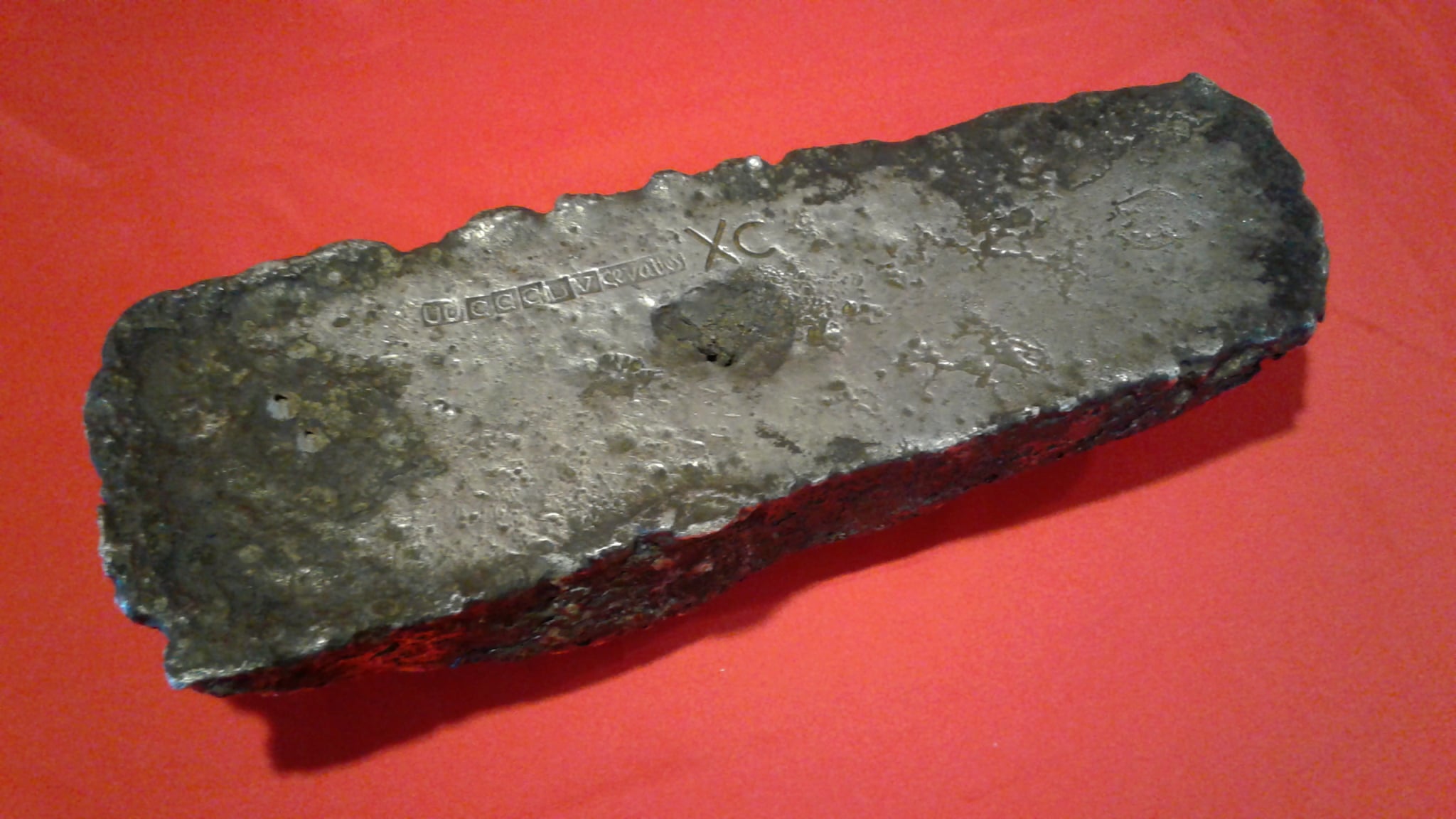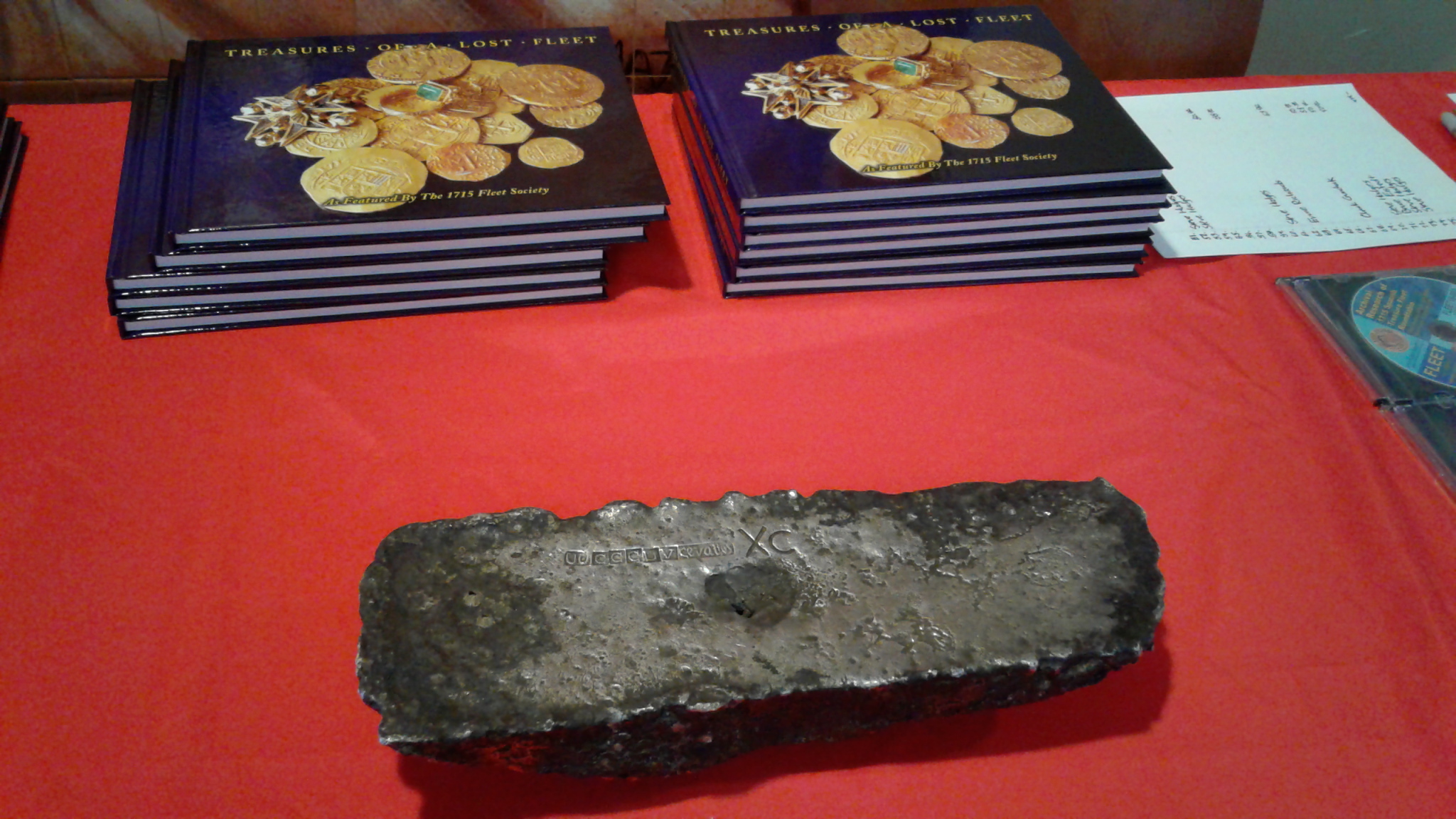April’s featured Treasure made its appearance at the recent International Conference in St. Augustine on March 17, 2017.
This silver bar was discovered in the 1960’s by Kip Wagner at “the gold wreck, south of Fort Pierce”. It is so described by Kip WagnerKip Wagner (1906 – 1972) was instrumental in the formation of the team that later became the Real Eight Company and one of the greatest salvage groups that ever explored the 1715 Fleet wrecks. He ... More on pages 214-215 of his book Pieces of Eight, Recovering the Riches of a Lost Spanish Treasure Fleet (1966). The “gold wreck” was also referred to at the time as the Colored Beach wreck and is today known as the Douglass Beach wreckA 1715 Fleet wreck site located a few miles south of the Fort Pierce Inlet. It is often referred to by its old name, “Colored Beach.” In some early Real Eight Company correspondence, it was referr... More. Real 8 offered this bar as lot 22 in Schulman’s November 1972 Spanish Galleon Treasure sale. The lot was captioned the Big Silver Bar, with a full page photo (p. 22).
The bar is also pictured and described on page 122 of Spanish Treasure Bars from New World Shipwrecks (2003) by Alan K. Craig and Ernest J. Richards, Jr., The bar is crudely rectangular with some obvious corrosion. Its top surface is inscribed with UUCCCLV (denoting a fineness of 2355), followed immediately by the name Cevallos, believed to be the last name of the official who assayed this bar.

Next comes XC, denoting a tally number of 90. Further to the right, the bar also contains an unidentifiable tax stamp, known as the Kings fifth.
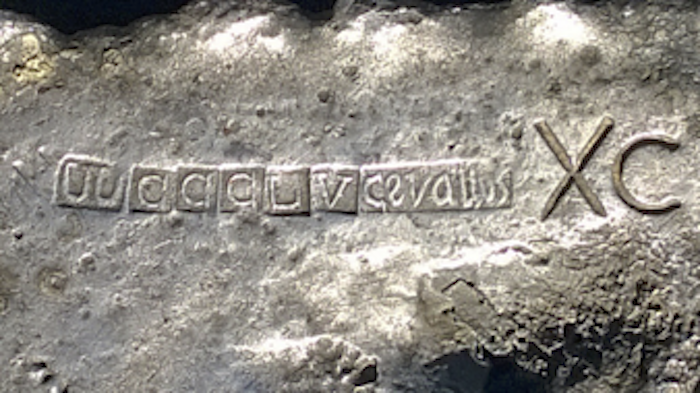
Last but not least, the assayer’s “bite” is also present on the left lower corner of the bar. This so-called “bite” was a small piece of silver removed from the bar as payment to the assayer and to test the purity of the silver. The bar’s dimensions are: 37 x 13.4 x 5.3 cm. The bar weighs just under 36 lbs. Craig reports its weight at 35 lbs 8.5 oz.
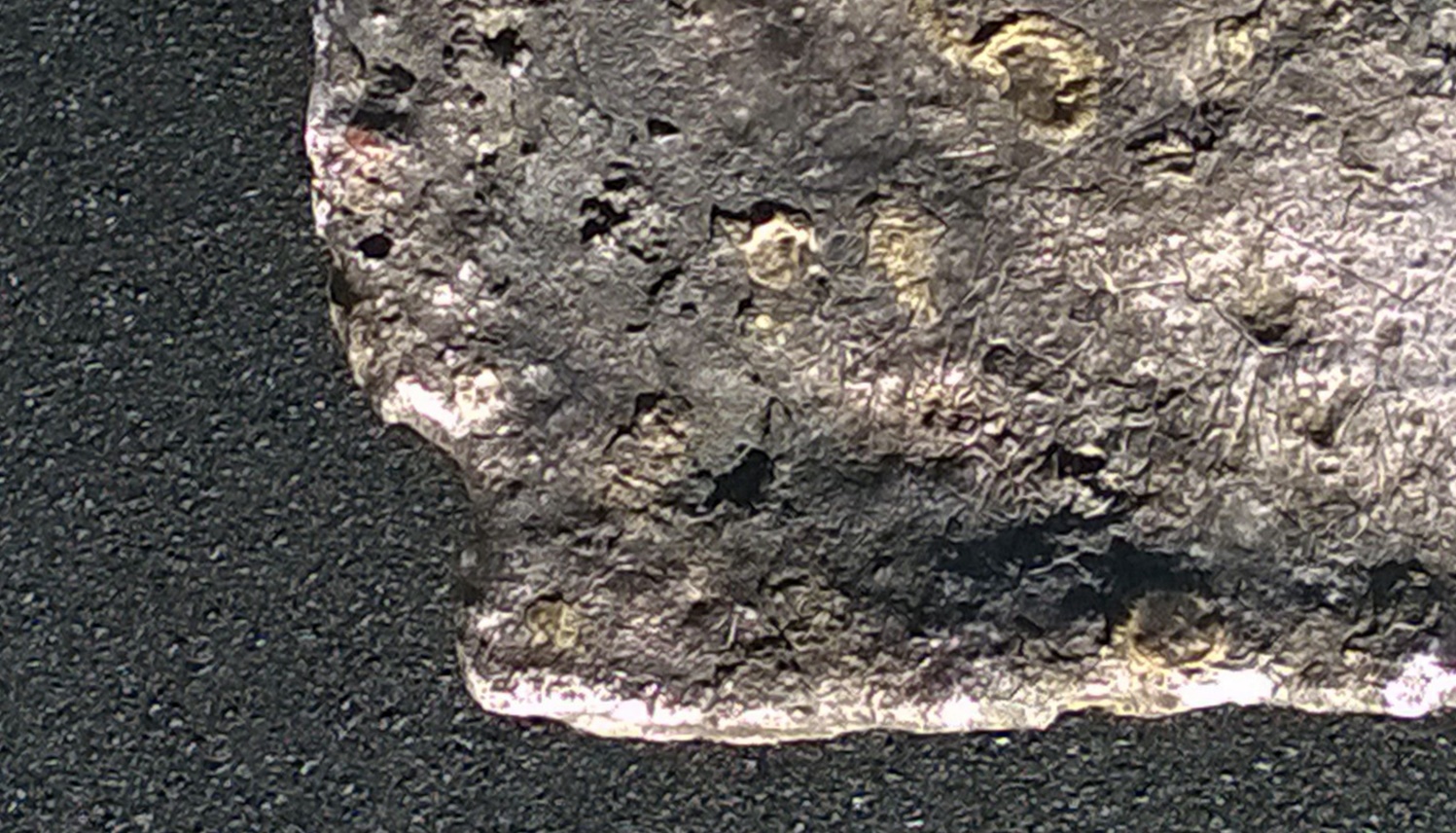
At the time of its discovery, this bar was the largest Spanish silver bar recovered in American waters. Today it has been surpassed by many of the silver bars recovered from the wreck of the Nuestra Señora de Atocha (1622) and by a single silver bar discovered on the Jupiter Wreck, believed to be the San Miguel Arcangel (1659).
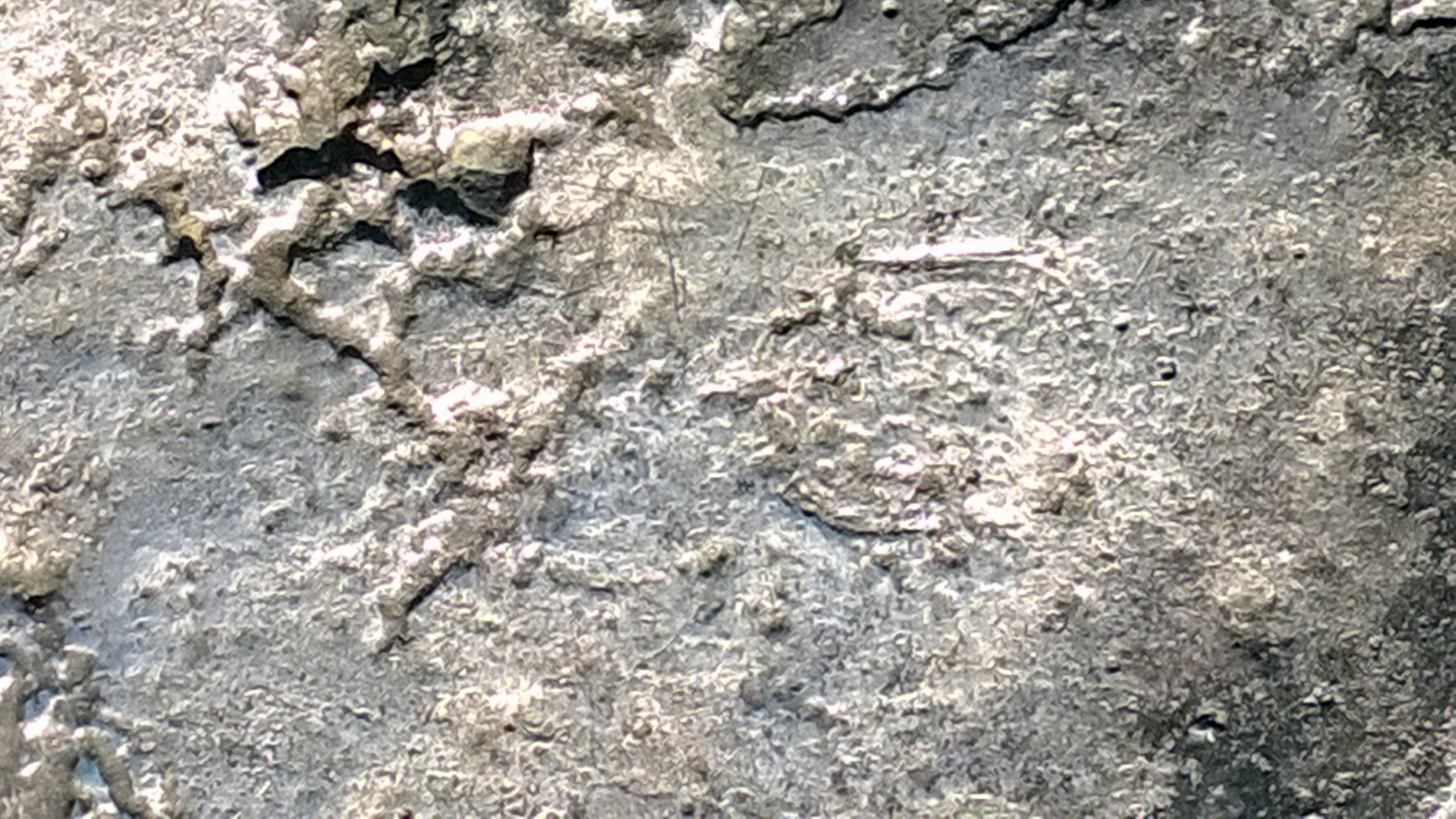
It remains the only large silver bar with documented Real 8 provenance recovered from a wreck of the 1715 fleet. Although it has not been determined which of the ships of the 1715 fleet was lost at Douglass Beach while transporting this bar, it was most likely one of the vessels of the New Spain Fleet under the command of General Juan Esteban de Ubilla.
Text courtesy of Jorge Proctor. Images courtesy of Jorge Proctor and Warren Clark.
